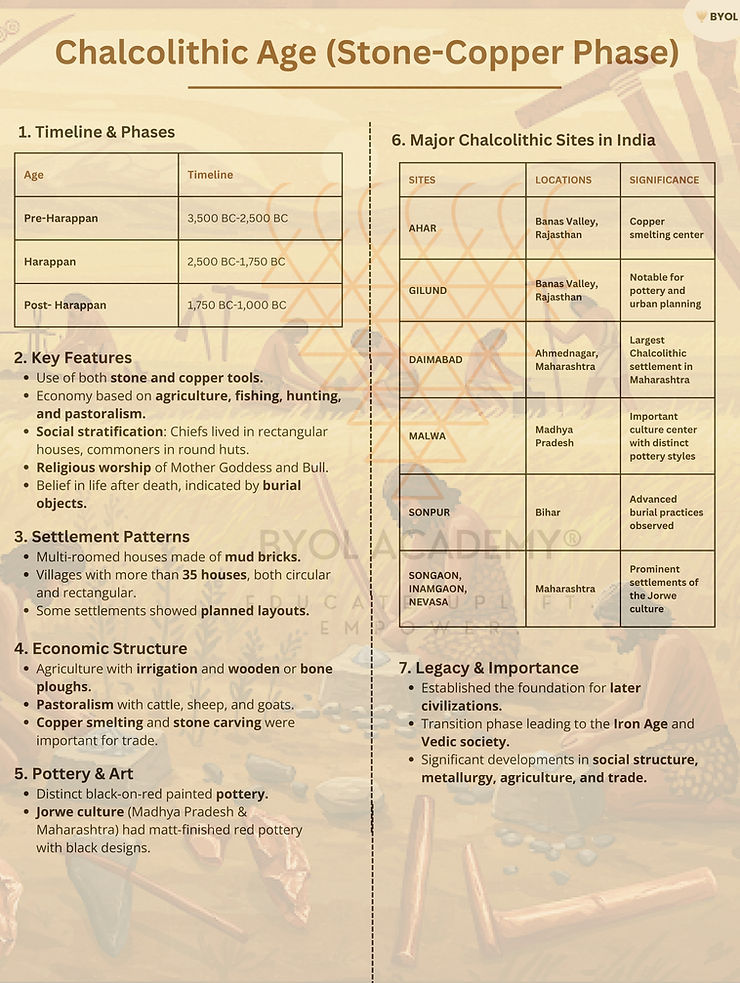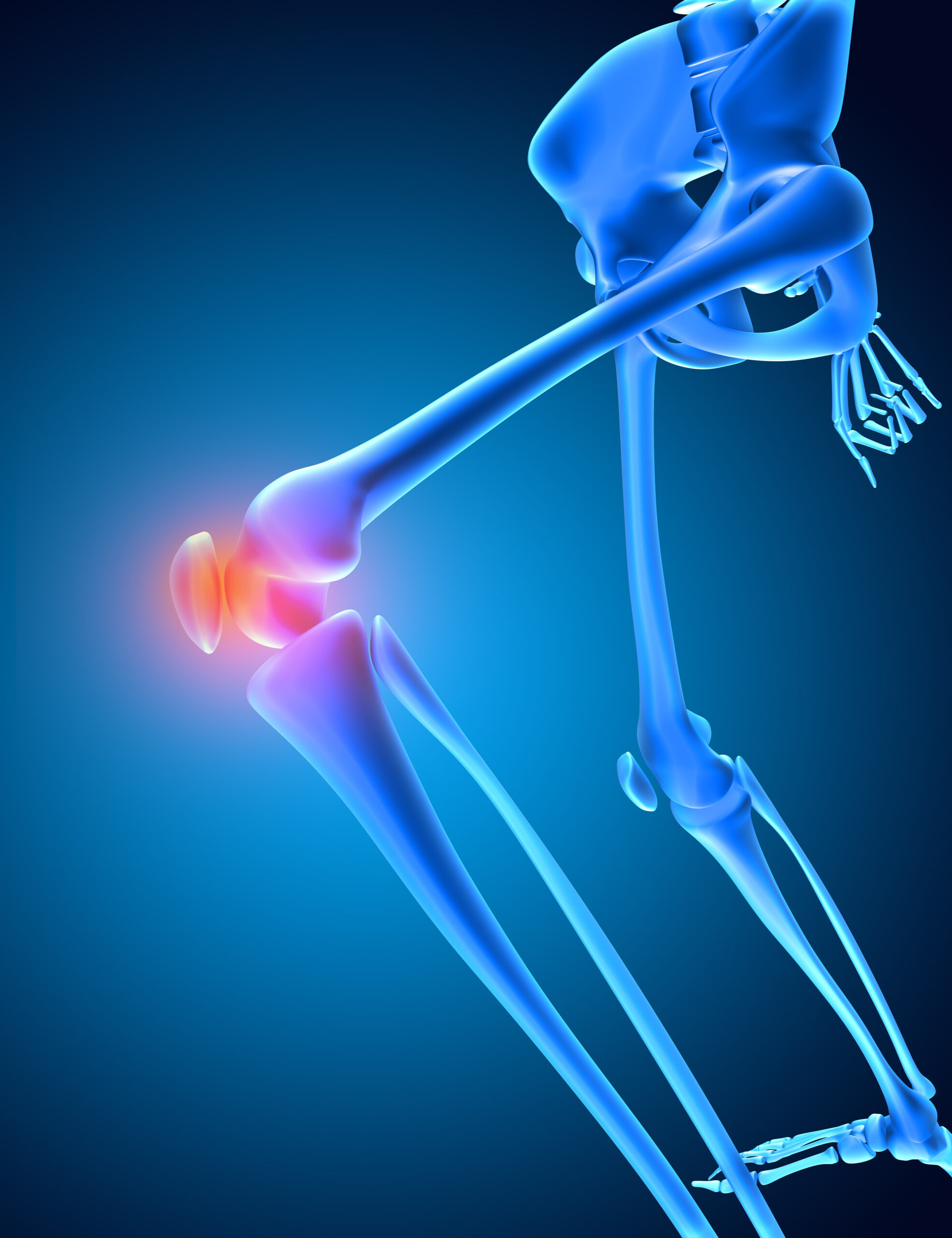Introduction
In ancient India, the Chalcolithic Age—also referred to as the Stone-Copper phase—marks a crucial turning point. Both stone and copper tools were used throughout this time, demonstrating early technological developments. Its social systems, economic advancements, and regional cultures set it apart. Three general stages can be distinguished within the Chalcolithic period:
| Age | Timeline |
| Pre-Harappan | 3,500 BC-2,500 BC |
| Harappan | 2,500 BC-1,750 BC |
| Post- Harappan | 1,750 BC-1,000 BC |
The Chalcolithic people contributed substantially to the development of later civilizations because they were skilled in agriculture, stone construction, and coppersmithing.
Key Aspects
1. Social Structure and Patterns of Settlement
- When commoners lived in round huts and chiefs lived in rectangle houses, social inequality became apparent.
- More than 35 homes, ranging in shape from circular to rectangular, were frequently seen in settlements.
- They constructed multi-roomed homes with thatched roofs out of mud and mud bricks.
2. Economic Structure
- Mostly centered in villages, the Chalcolithic economy was reliant on farming, fishing, hunting, and pastoralism.
- Irrigation methods and wooden or bone ploughs were used for farming.
- Raising cattle was a common occupation, and sheep and goat pastoralism was used in unfavorable weather circumstances.
- Two important businesses that supported trade and commerce were the smelting of copper and the carving of stones.
3. Religious Beliefs and Practices
- The Chalcolithic people worshipped the Bull and mother goddess, suggesting the earliest examples of fertility and agricultural religion.
- The finding of many fire altars indicates that fire worship was common and that sacrificial practices were practiced.
- The presence of funeral objects and pots at burial places is indicative of a belief in life after death.
4. Art and Pottery
- Pottery had homogeneity in design and was extremely specialized.
- During this time, black-on-red painted pottery was a prominent characteristic, with regional variations among various subcultures.
- The Jorwe culture, which is found in Madhya Pradesh and Maharashtra, is distinguished by its matt-surfaced, red pottery with black patterns.
Chalcolithic Sites in India
| SITES | LOCATIONS | SIGNIFICANCE |
| AHAR | Banas Valley, Rajasthan | Copper smelting center |
| GILUND | Banas Valley, Rajasthan | Notable for pottery and urban planning |
| DAIMABAD | Ahmednagar, Maharashtra | Largest Chalcolithic settlement in Maharashtra |
| MALWA | Madhya Pradesh | Important culture center with distinct pottery styles |
| SONPUR | Bihar | Advanced burial practices observed |
| SONGAON,INAMGAON,NEVASA | Maharashtra | Prominent settlements of the Jorwe culture |
In India, the Chalcolithic Age established the groundwork for later developments in social structure, agriculture, and technology. During this time, simple agrarian cultures gave way to more complex socio-economic systems as a result of notable advancements in pottery, metallurgy, and settlement patterns. The earliest phases of civilization are addressed by the existence of carefully planned communities, religious rituals, and unique artistic representations. Furthermore, the Chalcolithic cultures helped to bridge the gap between ancient customs and modern cities by influencing subsequent Iron Age and Vedic societies. As a result, the Chalcolithic Age continues to be an important stage in India’s technological and cultural development.





